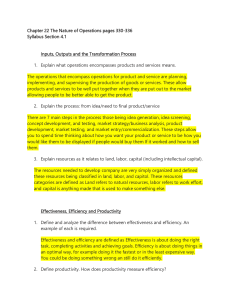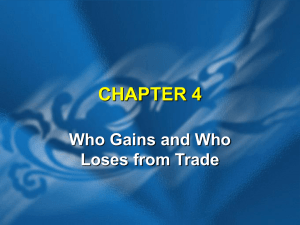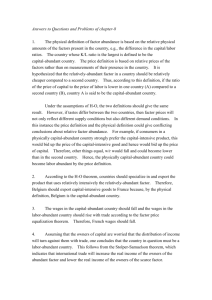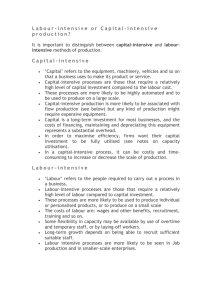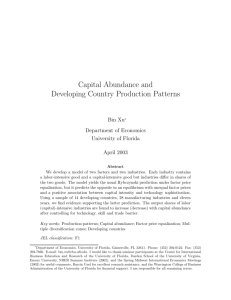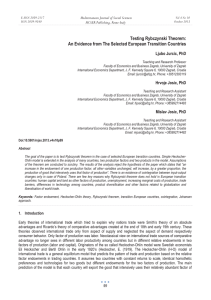BUS 515
advertisement
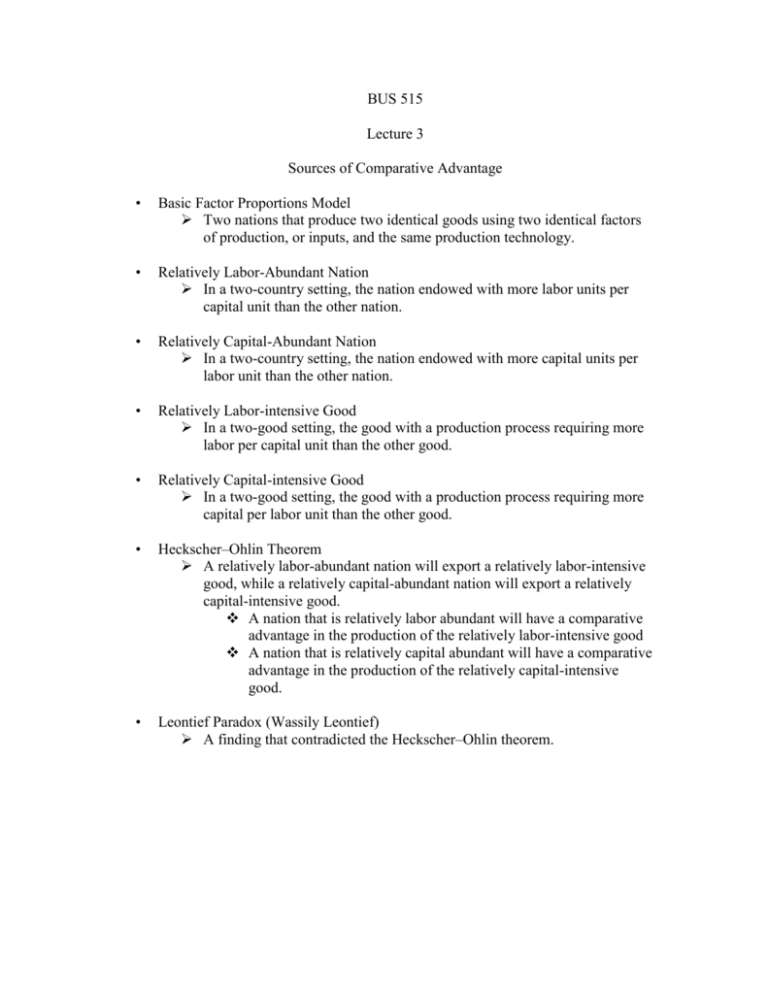
BUS 515 Lecture 3 Sources of Comparative Advantage • Basic Factor Proportions Model Two nations that produce two identical goods using two identical factors of production, or inputs, and the same production technology. • Relatively Labor-Abundant Nation In a two-country setting, the nation endowed with more labor units per capital unit than the other nation. • Relatively Capital-Abundant Nation In a two-country setting, the nation endowed with more capital units per labor unit than the other nation. • Relatively Labor-intensive Good In a two-good setting, the good with a production process requiring more labor per capital unit than the other good. • Relatively Capital-intensive Good In a two-good setting, the good with a production process requiring more capital per labor unit than the other good. • Heckscher–Ohlin Theorem A relatively labor-abundant nation will export a relatively labor-intensive good, while a relatively capital-abundant nation will export a relatively capital-intensive good. A nation that is relatively labor abundant will have a comparative advantage in the production of the relatively labor-intensive good A nation that is relatively capital abundant will have a comparative advantage in the production of the relatively capital-intensive good. • Leontief Paradox (Wassily Leontief) A finding that contradicted the Heckscher–Ohlin theorem. Factor Price Equalization • Factor Price Equalization Theorem Under the assumptions of the factor proportions model, uninterrupted trade will bring about equalization of goods prices and factor prices across nations. Wages, interest, and rental payments • Stolper–Samuelson Theorem The theory that, in the context of the factor proportions model, free trade raises the earnings of the nation’s relatively abundant factors and lowers the earnings of the relatively scarce factors. International Production and Comparative Advantage • Outsourcing A strategy in which one organization hires another organization to complete a particular stage of the production process • Contract Manufacturing A production strategy in which one organization hires another organization to manufacture a good under the hiring firm’s name and to the hiring firm’s specifications. Economic Growth • Economic Growth Occurs when a nation experiences an increase in available resources or a technological advance and the nation’s production possibilities expands. • The Rybczynski Theorem (T. M. Rybczynski) The theory that if a nation experiences an increase in the amount of a resource, it will produce more of the good that uses the resource relatively intensively in its production process and produce less of the other good.

